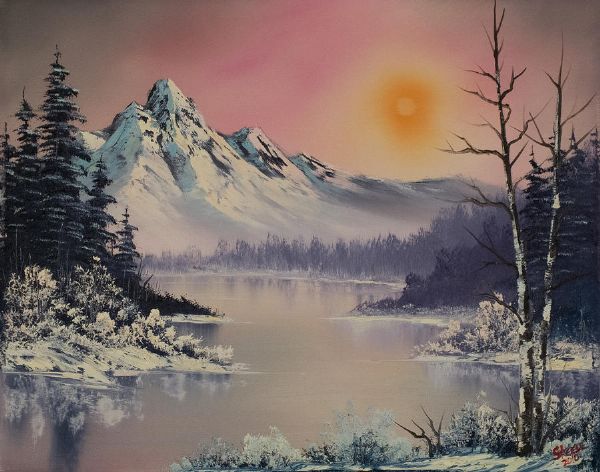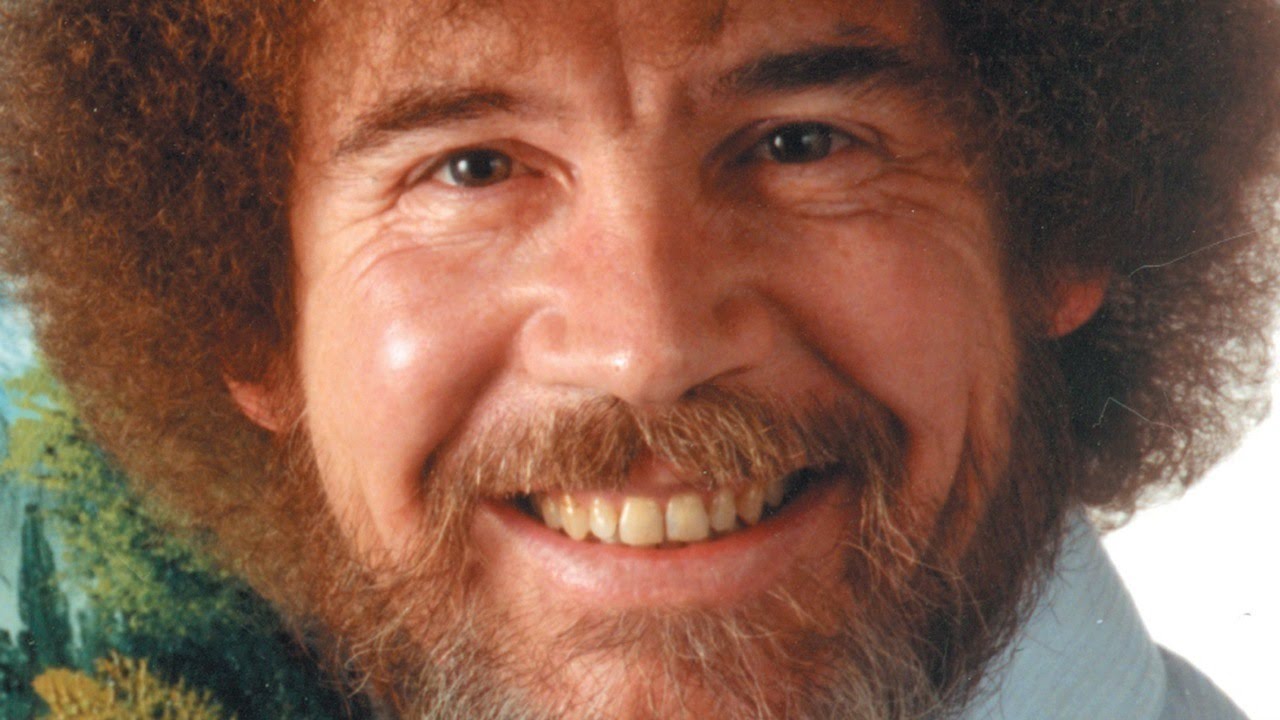
It is another frantic Friday, the final of five inundated workdays. An executive’s fingers fly across the keyboard, responding to one of scores of actionable items demanding time-sensitive attention.
Today the inbox’s incessant pinging, announcing the arrival of yet another email, is distraction enough without the extraneous office background banter. Earbuds affixed, he drowns out the prattling coffee talk of colleagues in favor of a pleasant shush-shush-shush—brushstrokes against the backdrop of a gentle, reassuring voice.
It’s a Bob Ross kind of day.
By now, the calming nature of Ross’s televised series The Joy of Painting is well documented. Insomniacs say the soothing cadence of his soft, baritone voice helps them sleep. Days before the 2016 election, the Huffington Post recommended the show as a respite from political anxiety. For our busy executive, Ross is a YouTubed yogi, advising against the urge to punch his computer screen in an overworked outburst.
But Ross’s allure transcends his presence as a simple onscreen sedative. In the modern world of meditation apps, generously prescribed downers, and hundreds of channels of sleep-inducing programming, serenity alone cannot explain how a low-budget public television painting show continues to captivate more than two decades after its star’s death.
This painter’s enduring popularity goes beyond surface-level soothing and pop culture camp. Ross is far more than a happy little frizzy-haired hippy.
First, there’s the matter of joy.
Before finding deeper meaning in The Joy of Painting, its title intention must be addressed and, ultimately, dispelled. Put simply, The Joy of Painting’s primary value is not learning how to paint. Consider this: A one-hour Bob Ross special has more than three million views on YouTube. If even a fraction were painting along, the American landscape would be littered with… well… American landscapes. And bad ones at that: most people trying to replicate Ross’s self-proclaimed simple technique would end up with something barely distinguishable from spin art. In making it look easy, Ross is delightfully deceptive. The myth of artistry becomes artful mythology, adding to the inviting accessibility of his wonderful world. We don’t watch The Joy of Painting for painting; we watch The Joy of Painting for joy: its creator’s contagious love of life.
But looking past this there are reasons—as Ross would say, “happy accidents”—that his smile-sparking spell has retained its potency.
For one, The Joy of Painting is timeless—not in the “classic” sense, but rather the more literal meaning of having no association with any specific period of time whatsoever. Against a black backdrop a man, clad in jeans and a simple painter’s shirt, is accompanied only by a canvas, palette, and selection of brushes. Between painting tips, the running monologue sticks to such epoch-neutral topics as love of animals, military service, and mild self-deprecation. The result is complete era-ambiguity. The series could take place anytime from the invention of color television to present-day, offering an escape not only from our lives but our times. It does so as effectively in 2017 as it did in 1987 and will in 2047, because something with no date cannot become outdated.
It is tempting, and usually wildly inaccurate, to deify the dead. However, Ross’s 200-plus hours of programming, laid out over an indecipherable decade and accessible instantly online, afford him an omnipotent—Ross might use the word “Almighty”—time transcendence. Ross is as evergreen as his trees, and his onscreen demeanor and offscreen shyness combine for a durable persona attractive to most and offensive to none.
All of this is the stuff of immortals—a timelessness that makes the show forever watchable and, therefore, ever reliable. Here, another factor is the program’s content.
There are over thirty thirteen-episode seasons of The Joy of Painting but, ironic considering the incredible 403 shows Ross filmed, dearth of variety is among its deepest virtues. If you’ve seen Bob paint one mountain range and foreground grove of trees, mistily reflected in a serene lake, you’ve seen them all. This monotony is an asset: a predictable, reassuring pastoral paradise in our increasingly chaotic, artificially manufactured lives. While we slog through rush-hour traffic only to chain ourselves to desks, there is a calming presence painting a static bucolic scene.
As the backdrop to, for example, a workday, Ross is dependably mellowing without demanding full attention or—when the day’s responsibilities inevitably claim stretches of total concentration—any attention at all. We are free to pop in and out of absorption while a patient painter shares doses of on-demand peace. When our focus shifts elsewhere, Ross returns to the background with the assurance that we’re not missing anything crucial.
Second, there’s the matter of the show’s public history.
The Joy of Painting’s no-frills, uncontroversial simplicity is a product of pure public television. Ross is the antithesis of the glitz, glamour, and faux reality most (officially) non-scripted “reality” television has become; what’s more, looking back through television history, it is hard to imagine a for-profit network seeing Ross as a viable revenue generator, let alone sticking with him through hundreds of episodes.
And had that happened—in the exceedingly unlikely event that The Joy of Painting achieved decade-long commercial success—the result would have been wholly self-defeating. The show’s magic would be far less mesmerizing were it interrupted by advertisements two or three times an episode. It has a groove, a rhythm not easily resumed once disrupted. It just wouldn’t work.
In this fashion, The Joy of Painting exemplifies the sort of enriching programming unlikely to exist were economics the driving factor. Ross is a work of art that just happened to make works of art. Had monetization been a necessity, we’d never have heard of him.
Given recent threats to privatize public television—a notion both oxymoronic and just plain moronic—Ross’s legacy serves as a warning. Indeed, the show’s public television roots provide another point of transcendence: the quality of being uncorrupted by commercialism. Simply put, The Joy of Painting is priceless.
But though such definable attributes explain much of Ross’s ongoing appeal, they don’t connect all the dots or, more suitably, paint the full picture. There are intangibles at play, some combination of grace, humility, and complete lack of pretentiousness that total something greater than the sum of its parts. Bob Ross isn’t just someone you’d want to have a beer with; you’d want him in your family. He would instantly become anyone’s favorite uncle.
We’ll never fully know how he achieved so lofty a legend. Ross was reclusive in life, and died too young—at fifty-two, of lymphoma, shortly after his final episodes were filmed. Firsthand elaboration is forever unavailable, a closed door that only adds to The Joy of Painting’s undying mystique. Ross, like his snow-capped mountains, is forever frozen in time, to be enjoyed in perpetuity.
***
Image credits: feature image, image 1, image 2, image 3.







